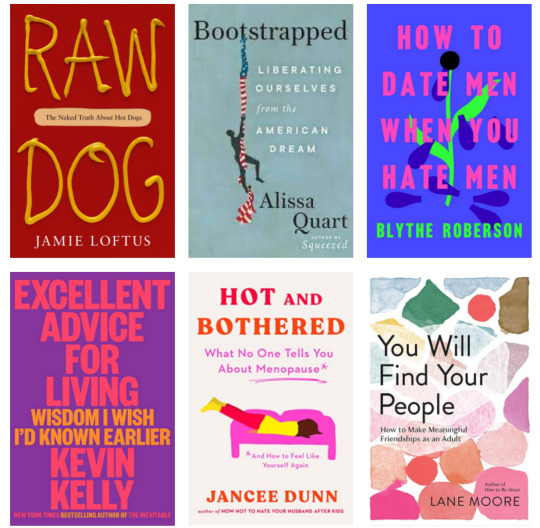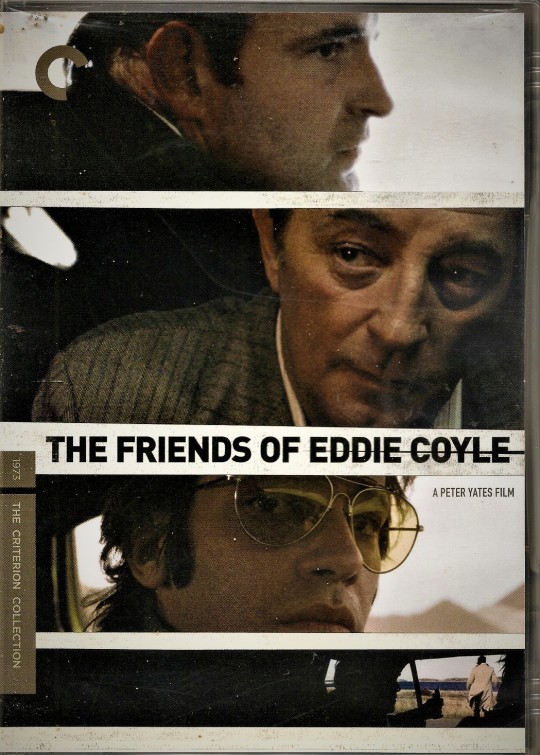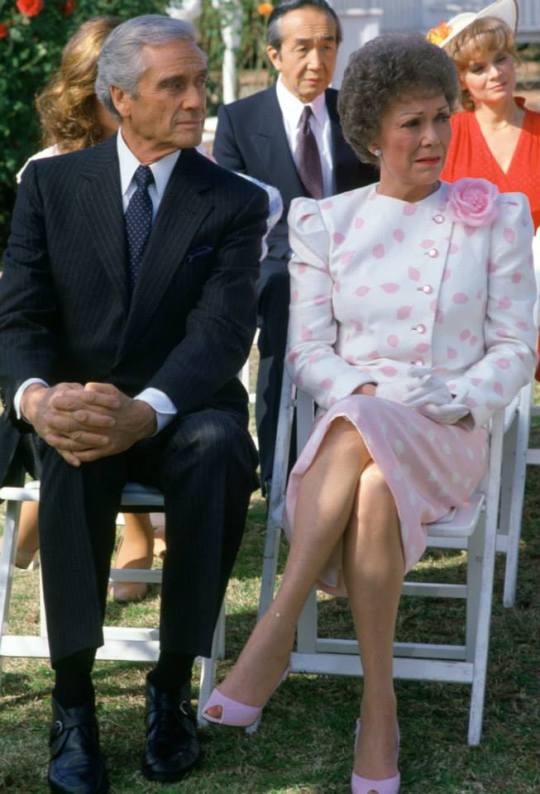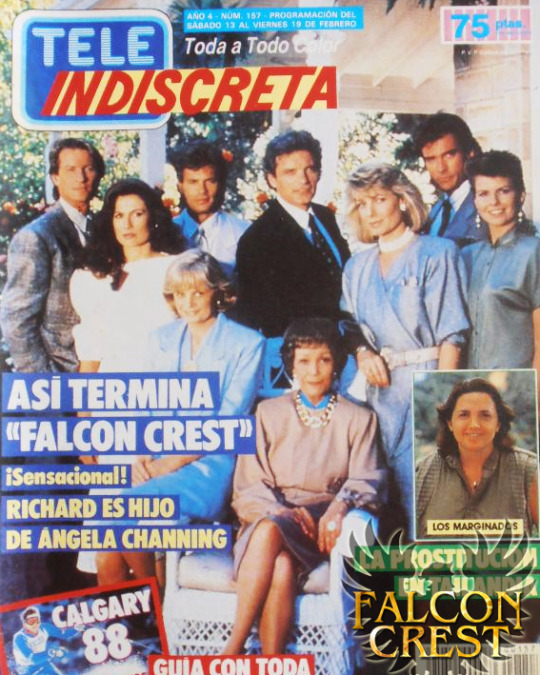#Margaret Ladd
Explore tagged Tumblr posts
Text

Vicky (Dana Sparks), Angela (Jane Wyman), Emma (Margaret Ladd), Maggie (Susan Sullivan) et Melissa (Ana Alicia).
#jane wyman#angela channing#ana alicia#emma channing#margaret ladd#susan sullivan#melissa agretti gioberti cumson#maggie gioberti chaning
2 notes
·
View notes
Photo

1 note
·
View note
Text

The cast from the premiere season of 'Falcon Crest,' (1981-1982). Clockwise from front center: Jane Wyman, Robert Foxworth, William R. Moses, Jamie Rose, Chao Li Chi, Nick Ramus, Lorenzo Lamas, Abby Dalton (sitting on arm of chair), Margaret Ladd (middle row), and Susan Sullivan.
33 notes
·
View notes
Text
May 2023 Reads







Thief! - Megan Whalen Turner
The King of Attolia - Megan Whalen Turner
A Conspiracy of Kings - Megan Whalen Turner
Thick As Thieves - Megan Whalen Turner
Painted Devils - Margaret Owen
The Other Merlin - Robyn Schneider
The Future King - Robyn Schneider
Happy Place - Emily Henry
The Fiancee Farce - Alexandria Bellefleur
Emma of 83rd Street - Audrey Bellezza & Emily Harding
To Swoon and to Spar - Martha Waters
Evvie Drake Starts Over - Linda Holmes
Summer Reading - Jenn McKinlay
The Boyfriend Candidate - Ashley Winstead
Imogen, Obviously - Becky Albertalli
Lying in the Deep - Diana Urban
This Book is My Best Friend - Robin Robinson
Quietly Hostile - Samantha Irby
Broken Horses - Brandi Carlile
Honey, Baby, Mine - Laura Darn & Diane Ladd
Live Wire - Kelly Ripa
Beautiful Trauma - Rebecca Fogg
Monsters - Claire Dederer
Bird by Bird - Anne Lamott
Raw Dog - Jamie Loftus
Bootstrapped - Alissa Quart
How to Date Men When You Hate Men - Blythe Roberson
Excellent Advice for Living - Kevin Kelly
Hot and Bothered - Jancee Dunn
You Will Find Your People - Lane Moore
Betting on You - Laurie Ruettimann
I Saw You... - Julia Wertz
How to Die Alone - Mo Welch
CraftFail - Heather Mann
Random Illustrated Facts - Mike Lowery
This Book is For You - Worry Lines
Around the World Vegan Cookbook - Niki Webster
Bake, Make, and Learn to Cook - David Atherton
Bake, Make, and Learn to Cook Vegetarian - David Atherton
Bold = Highly Recommend Italics = Worth It Crossed out = Nope
Thoughts:
This month continued my Queen’s Thief obsession. Highly recommend this series - each book goes in a new and exciting direction.
Also, Happy Place broke me and then built me up again. Painted Devils did not disappoint, and the Emry Merlin series was a nice surprise.
Goodreads Goal: 174/400
2017 Reads | 2018 Reads | 2019 Reads | 2020 Reads | 2021 Reads|
2022 Reads | 2023 Reads
59 notes
·
View notes
Text
Music for Films, Vol. IV: Once upon a Time…in Benedict Canyon or, Tarantino, Redux

(N.B., I wrote an earlier piece in this series about Quentin Tarantino’s Death Proof [2007], which seemed to me to represent the apotheosis of that director’s postmodern sensibility, for cinema and for its use of pop music. That still seems accurate to me. But Tarantino’s Once upon a Time…in Hollywood [2019] turns out to be a much more interesting engagement with both of those aspects of his filmmaking, and with postmodernism, generally — and it’s also a film I admire a bit more. So we go around again. If, however, you are sick of Tarantino and of chatter about his films, I get it. For sure, he’s irritating as hell in interviews — and below, I start with some of my own irritation at his winking and ironical guffawing. But, as is the case with someone like Richard Hell, it’s useful to separate the man from the work, and if you can pull that off, the work can be pretty great.)
There are moments in Once upon a Time…in Hollywood at which Quentin Tarantino’s auto-referentiality tips over from risible cleverness into unsavory self-obsession. See the scene about 80 minutes into the film, during which Cliff Booth (Brad Pitt, effortlessly cool) finally picks up the always hitching and emphatically sexually available Pussycat (Margaret Qualley, breathlessly feral). After they connect on their shared histories with Spahn Movie Ranch, Pussycat settles into the Coupe de Ville’s massive bench seat and, inevitably, puts her feet up on the dash. Her toes smush into the windshield; the bottoms of her feet are filthy. You can just about feel Tarantino hyperventilating — or maybe he’s laughing his ass off at us. Tarantino and feet, it’s an exhausted punchline by now. And the moment is almost a direct quotation, a visually inverted rendition of the opening shot of the narrative portion of Death Proof, in which Butterfly’s (Vanessa Ferlito) feet rest on the dash of Shanna’s (Jordan Ladd) Honda Civic. Tarantino seems to want you to make the connection, and, perhaps, to feel a little bit gross about the fact that you can.
The whole scene is shot through with problematic erotic energies, generated less so by Pussycat’s directness (“Obviously I’m not too young to fuck you, but obviously you are too old to fuck me”), more so by Cliff’s reasons for not pursuing her (“What I’m too old to do is go to jail for poontang”). And Tarantino has Dee Clark’s “Hey Little Girl” lasciviously jangling from the Coupe de Ville’s radio: “Hey little girl in the high school sweater / Gee, but I’d like to know you better / Just a-swinging your books and chewing gum / A-looking just like a juicy plum.” Gee. I get the crassness of the choice, which provides an intensification of the more playful song accompanying Cliff’s first look at Pussycat on a different LA street (and about 63 minutes earlier in the film), Simon & Garfunkel’s “Mrs. Robinson.” With all the signaling, ogling and panting, it’s easy to forget the song that immediately proceeds “Hey Little Girl,” sonically framing the initial gestures of Cliff and Pussycat’s conversation.
youtube
The song is typical of Neil Diamond’s peculiar talent for constructing gravid schmaltz that is neither too serious nor too cloyingly mawkish (mostly, anyways). That emotional tonality seems a less than intuitive choice for Cliff and Pussycat’s encounter — until we remember why she wants a lift to Spahn Ranch, and who might be there to meet them. Diamond’s Brother Love is a religious huckster, a metaphysical con man, and so, in part, was Charles Manson, a wannabe acid-soaked Svengali who managed to bewitch more folks than seems believable. Pussycat’s passionate desire for Cliff to meet him (“Charlie is reeeeally gonna dig you”) suggests Manson’s poisonous influence over her. She is thus the fictional avatar of numerous women and girls, like Mary Brunner, Susan Atkins and Squeaky Fromme, who fell under Manson’s influence, utterly convinced of his psychic and prophetic powers.
Manson, as is widely known, was erstwhile friends with Beach Boy Dennis Wilson and with producer Terry Melcher. Manson first went to the house at 10050 Cielo Drive, where Manson Family members would eventually murder Sharon Tate and several others, looking for Melcher. Manson was attempting a career as sort of demented folksinger manque, and he wanted to bug Melcher about it. By 1969 Melcher was coasting on the rep he had built producing the Byrds’ hit records from 1965 and most of Paul Revere & the Raiders’ sides from 1965 to 1968 (and that band’s singer Mark Lindsay also briefly lived at 10050 Cielo), including this tune:
youtube
Watching Sharon Tate (Margot Robbie) bounce around the room is a charming experience, and Robbie’s still-youthful beauty is an interesting counterpoint to the aesthetic pleasures of Pitt’s middle-aged body. In truth, Robbie isn’t given all that much to do in Once Upon a Time…in Hollywood; mostly Tarantino seems to have told her, “Okay, be adorable” (though we should also note that it isn’t hugely easy to be adorable on demand). There may be an intent in that: to revise the dominant filmic profile on Tate, the sex kitten in Valley of the Dolls (1967) and half-naked beach bunny in Don’t Make Waves (1967), presentations underscored by a nude-photo-supplemented article on the actor in Playboy. Tarantino renders Tate beautiful — not much else one can do with Robbie — but never insists on her as a libidinally charged presence (save for a shot or two of her feet …).
Hence the smart choice of the Paul Revere & the Raiders tune. Their goofy costumes and bright vocal harmonies cast them very much in the mold of the British Invasion, with Beatles-ish overtones of mop-topped sweetness, and the explicitly anti-dope messaging of the band’s hit “Kicks” further associated them with a cleaned-up vibe, distinct from druggy counterculture. In the film, Tate teases Jay Sebring (Emile Hirsch), “Aw, what’s the matter? You afraid I’ll tell your friend Jim Morrison you were dancing to Paul Revere & the Raiders?” Morrison doesn’t appear in the movie, but in just another minute of screen time, Manson (Damon Herriman) does. Sebring stops him at the front door of 10050 Cielo, and when Tate approaches (walking past a massive reproduction of a poster for Don’t Make Waves, Tarantino just can’t help himself), Sebring tells her, “It’s okay, honey, it’s a friend of Terry’s.”
Of course, the arc of history tells us that it’s not okay. The sheen of good feeling and innocent kicks pop culture was attempting to sell in the late Sixties had been mussed up by all the “fucking hippies” that Cliff and Rick Dalton (Leo DiCaprio) continuously curse at as they drive the Strip. Even Spahn Ranch, in the film formerly the production site for Dalton’s hit cowboy show Bounty Law!, has been overrun by Manson’s accumulating freaks. That’s another historical fact that Tarantino lovingly recreates, reducing the Ranch to a relic, a dusty ghost town haunted by sweaty, fried, raggedy heads and a legion of young women, Pussycat among them (Dakota Fanning turns in a terrific performance as Squeaky: paranoid, overheated, drenched in weird, wanton ambiguities).
Their presence is disorienting, but it can’t entirely dislodge the visual logic of the cowboy film, the Western. In part, that’s due to the sheer amount of time the film devotes to painstaking reconstructions of Westerns, in cinema and TV, in LA and Italy; see especially all the minutes of Dalton on set, filming his guest appearance for the pilot of Lancer, a Western that ran on CBS through the late 1960s (and we should note that Bruce Dern, who portrays George Spahn in Tarantino’s film, did some work on Lancer early in his career). But the more interesting nods and allusions to the Western cluster around Cliff: buckling on a holster-style work belt when he fixes Rick’s TV antenna; staring down the line-up of Manson Family women who gather across the dirt lane in Spahn Ranch, like bandits inviting a gunfight; and most emphatically, his shoot-out-style stand-off with Tex Watson (Austin Butler, and more on that just below). Appropriately, when Cliff gets his first few minutes of solo camera time early on in the film, Tarantino scores it with a song that works through numerous tropes of the Western antihero.
youtube
Some might assert that a Gram Parsons tune would better suit both the Western style and LA in 1969. But I’ll argue for the Seger song, even though it was recorded when he styled his band as the Bob Seger System, not yet the Silver Bullet Band (which would get us semiotically closer to the gun and the cowboy). “Ramblin’ Gamblin’ Man” (1969) is certainly a rhythmic match for Cliff, as he careens through the city’s streets and freeways in his beat-to-shit Karmann Ghia. And check out the lyrics: a tale of a “ramblin’ man” who left home at thirteen; a past-master of roulette and dice; rugged and a little ugly, but full of macho sexual confidence. All he needs is the horse. Most significant, the song’s lyric speaker eventually notes, “Gotta keep moving, never gonna slow down / You can have your funky world, see you around.” That’s Cliff to a tee, but it’s also Sergio Leone’s Man with No Name, who is always ready to ditch the scene when the civilized world becomes too much its petulant, cynical self. Better out in the bush, among the cacti and canyons. And while the usage of “funky” seems a poor fit for a cowboy’s mouth, it’s right on point for the film’s take on LA, as it lurches into counterculture’s violent dissolution.
It's unfair to counterculture to peg that dissolution to the Tate-Labianca murders. We can more meaningfully reference the 1970 explosion at 18 West 11th Street in NYC, or Eldridge Cleaver’s fugitive conversion to evangelical Christianity, or Altamont, or any number of other events, betrayals and tragedies. But the Manson Family’s perverted use of countercultural language (“revolution,” “the pigs,” “grokking”) is particularly galling in its confusions and lunatic bloody mindedness. Tarantino is tuned into it: see Sadie’s (Mikey Madison) deranged rant about “pigs” and “fascists.” Even a year earlier, other speakers were using the terms with much greater clarity, and many of those speakers were black.
So what do we do with this:
youtube
Black confronts white. Bad guys threaten good guy. The stand-off morphs into a massacre, but not before Cliff brings up the Western again, reminding us of Spahn Ranch and of Tex on his “horsie,” belittling him and adding to Cliff’s inability to take Manson’s minions at all seriously (Cliff, to Tex: “Uh, you are?” Tex, intoning: “I’m the devil, and I’m here to do the devil’s business.” Cliff, dismissive: “No, it was dumber than that…”). Soon Brandy the pit bull is chewing Tex and Sadie to pieces, and Cliff is hammering Katie’s (Madisen Beaty) head into any number of hard, angled surfaces. (Let’s not linger on Dalton’s flamethrower.) The violence is gratuitous, meaty, precisely staged and shot. It’s a Tarantino film, after all. And in this brutally antic sequence, the film and the director shift into another generic form, very dear to Tarantino: the revenge drama.
A number of Tarantino’s films have employed revenge plots: all of Kill Bill (2003, 2004), Death Proof (2007), Django Unchained (2012). Inglourious Basterds (2009, featuring a cartoonish but still satisfying performance from Pitt) expanded its revenge to world-historical scale, using film as a weapon for culture to take its vengeance on Hitler, and on the Nazi Party’s development of cinema as a vector for political propaganda. Once upon a Time…in Hollywood is less expansive but still has complex dimensions: American pop takes its revenge on Manson, rolling back his invasion of LA’s industrial and cultural turf and reversing — if only symbolically — his extinguishment of Tate and her career, of all the images and roles she might have given us.
But it’s possible to discern other layers to the vengeance, if one listens. Running throughout the fight sequence is the Vanilla Fudge’s bombastic, psych-rock rendition of “You Keep Me Hangin’ On” (1967), which is both a suitable and a strange choice. Suitable, in that its acid intensities resonate with Manson and with Cliff, who is tripping throughout the scene. Strange, though, in its lack of a clear thematic relation to the scene’s action, which seems to have guided other songs’ selections — certainly “Brother Love’s Traveling Salvation Show,” and “Hey Little Girl,” and “Ramblin’ Gamblin’ Man” and even, in its limited way, “Good Thing.” So why would Tarantino abandon that logic here, at the film’s big, bloody climax?
As ever, with Tarantino, the layers have histories.
youtube
“You Keep Me Hangin’ On,” of course, was first recorded and released by the Supremes, for whom it was a #1 charting single in 1966. There’s a sort of pattern suggested by the film, of utterances and meanings developed in black American culture that are quickly adopted and refitted, frequently rendered vanilla (hello) and commodified, by white culture. To be sure, the Supremes also produced a successful commodity with their version of the tune. But the play among those songs and vinyl sides suggests a more problematic set of appropriations — among them, Weatherman’s use of the revolutionary language developed by the Black Panthers and Stokely Carmichael, which Billy Ayers, Bernardine Dohrn and others spouted and spun out to fringe actors, like Manson, who degraded it, rendering it nearly meaningless.
“Helter Skelter” was another of the Manson Family’s watchwords, and another of Manson’s nutty notions, alleging that the Beatles song was endowed with the power to launch a race war in America. Manson’s racism mixed paranoia with his megalomania. He envisioned an America in which blacks would murder all the white people, save for him and his followers. In his view, blacks were too incompetent to govern themselves; they would need a white leader, and it would be Manson. So while Ayers and Dohrn called cops pigs in an attempt to make common cause with black revolutionaries (who were deeply skeptical of the white kids and their enthusiasms), Manson and his minions called cops pigs out of a chaotic psycho-social melange of persecution, ressentiment and bizarre apocalyptic divination.
So maybe we should linger on Dalton’s flamethrower a bit, after all. He uses it to torch Sadie to death, the Mansonite most earnest in her identification of him as another “piggie.” Close to the film’s beginning, there’s an ersatz movie clip drawn from The Fourteen Fists of McCluskey, in which Dalton, as the fictive hero McCluskey, uses the same flamethrower to burn a bunch of Nazi officers to death. It’s another Tarantino callback, to the climax of Inglourious Basterds and the incineration of many, many more fascists (and that scene had the benefit of the fever dream of Shoshanna Dreyfus’s [Melanie Laurent] face, projected onto the celluloid-fed inferno and madly laughing, surely one of the best images Tarantino has ever concocted). But the visual synonymy identifies Sadie with the Nazis. She seems to be the fascist. She has certainly been infected by Manson’s racist manias and linguistic depredations.
That may be too clever, by half — but with Tarantino, that sort of playful cascade of images and associations that ends up feeling meaningful is generally what we get, and in this case, there is a sort of critique to be made. If the postmodern in part emerged amid the collapse of counterculture’s revolutionary agendas, Once upon a Time…in Hollywood directs its wrath at a symbol of that collapse, and of the resulting nightmares borne on dope, irrationally enraged agony (especially over Vietnam, news of which occasionally issues from car radios in the film) and harebrained political analysis by kids reading texts that had currency amid a very, very different conjuncture. While Tarantino’s revenge narrative morphs generic forms again at the end, into alternate history, there’s a way in which that mutation can be read as a useful provocation. Not just a thought experiment, or a gesture lionizing fiction’s weirding power, in some ironized celebration of relativist spectacle. But a reminder that while history has to happen the way it happens, our histories are constructions, and they tell very partial and very particular stories. It’s an old saw, now, to recommend postmodernity’s meta- moves and pop cultural saturations as testing grounds for our reading strategies, but that doesn’t make the assertion any less cogent. Perhaps, to burn through the layers of images, to burn down the funhouse of contemporary revisionisms and to fight the fascists, who continue to manipulate media, what we need is a powerful instrument: our minds, tempered by their interactions with tempting narratives that wish to tell us pleasant stories.
Or mavbe we just want to watch Sharon dance, Manson be damned.
youtube
Jonathan Shaw
8 notes
·
View notes
Text
my non hf muses ranked by which musicals i think they could survive
could survive all 3: twain (on accident), kanami, baren, kusuo, kusuke, bilbo, tom, huck, claire, ronny, rachel, renee, tara, 44 (is the horrors), eliarin (is the horrors as well)
could survive the guy who didn't like musicals and black friday: shiroe, tsukishima, twyla
could survive the guy who didn't like musicals and nerdy prudes must die: louis, nader
could survive black friday and nerdy prudes must die: seung-gil, ranpo, bokuto, kiyoko, sam
could survive the guy who didn't like musicals: all of love, isengrim, elrond, huey, sham (is the hivemind), pamela, henry
could survive black friday: antoine, kenma, iwaizumi, osamu, dandelion, legolas, eomer, luchino, maria, graham, nile, ladd, sonia, roy (close call though), edith, vigilante, benjamin, yemevon
could survive nerdy prudes must die: yuri, ako, niccolo, the winter king, oikawa, terushima, atsumu, semi, roche, keith, lana, rui, darling, kazui, draculaura, pleasant, camille, zoruk
couldn't survive any of them: hirari, roland, belkia, graye, alador, eda, kaidou, simon, daishou, futakuchi, lev, cahir, leslaw, qinghua, qingqiu, pippin, boromir, kili, melvi, laz, christopher, victor, dallas, gretto, dune, connor, kaito, longya, parsifal, faybelle, five pebbles, looks to the moon, seven red suns, no significant harassment, orion, pamela, margaret, feliks, luminous, tempest, cyran
3 notes
·
View notes
Photo










The Whales of August (1987, Lindsay Anderson)
8/10/21
#The Whales of August#Lillian Gish#Bette Davis#Vincent Price#Ann Sothern#Harry Carey Jr.#Frank Grimes#Margaret Ladd#Tisha Sterling#Mary Steenburgen#drama#Lindsay Anderson#stage adaptation#80s#sisters#elderly#Maine#New England#seaside#widows#aging#summer#island#nostalgia#memory#oscar bait#oscar nominee
21 notes
·
View notes
Photo










Title sequence for Season 5 of Falcon Crest
#Falcon Crest#Jane Wyman#Robert Foxworthy#Lorenzo Lamas#David Selby#Ana Alicia#William R. Moses#Margaret Ladd#Susan Sullivan#Earl Hamner#1985#🧼
8 notes
·
View notes
Text










The Friends Of Eddie Coyle (1973)
"Is he dead?"
"If he's not now, he's never gonna be."
#The friends of eddie coyle#peter yates#1973#crime film#American cinema#Films i done watched#robert mitchum#peter boyle#Richard jordan#Steven keats#Alex rocco#joe santos#Mitchell Ryan#Peter MacLean#Carolyn Pickman#Margaret Ladd#Helena Carroll#george v. higgins#Novel adaptation#Every so often in a fit of pique or boredom or ennui i pick up a film cheap that i know next to nothing about. It's a hit and miss affair#But i usually do ok. This was one such film. I knew it was a crime film starring mitchum and that was it. If I'd realised it was by Peter#Yates I'd have had a better idea of what i was getting into. Happily this was one of those very lucky gambles where the film turns out to#Be genuinely excellent. Shot in Yates familiar documentary style and thoroughly gritty and bleak. It isn't really a star piece for mitchum#At all. It's a true ensemble piece in which we follow his character only to break off and follow keats or jordan (both excellent as are#All the cast). Yates maintains a middle distance from everyone. Just lines up the players and lets them do their thing. It's got shades of#Of his earlier uk effort Robbery but if anything it's harder and absolutely without sentiment. A clear influence on the departed too#A hard grim stoic film which tells a simple and familiar story but in such a way as to make it horribly compelling#Special mention to the ever wonderful alex rocco who gets a small role with few lines and spends most of the film behind a mask#But still makes his character entirely real and three dimensional. In true Yates style we never see The Man who pulls the strings#But if anything the film is stronger for it. This isn't big movers and shakers. Its the smallfry and the losers
4 notes
·
View notes
Photo

Bad movie I have The Friends of Eddie Coyle 1973
#The Friends of Eddie Coyle#Paramount Pictures#Robert Mitchum#Peter Boyle#Richard Jordan#Steven Keats#Alex Rocco#Joe Santos#Mitchell Ryan#Peter MacLean#Kevin O'Morrison#Marvin Lichterman#Carolyn Pickman#James Tolkan#Margaret Ladd#Matthew Cowles#Helena Carroll#Jack Kehoe#Jan Egleson#Jane House#Michael McCleery#Alan Koss#Dennis McMullen#Judith Ogden Cabot#Robert Anthony#Gustave Johnson#Sheldon Feldner#Ted Maynard
0 notes
Text

Phillip (Mel Ferrer) et Angela (Jane Wyman).
#philip erikson#mel ferrer#jane wyman#angela channing#margaret ladd#emma channing#chao li#chao li chi
2 notes
·
View notes
Photo

Falcon Crest’s Spanish Cover Jane Wyman (Angela Channing), Lorenzo Lamas (Lance), Susan Sullivan (Maggie), David Selby (Richard), Ana Alicia (Melissa), John Callahan (Eric Stavros), Dana Sparks (Vickie), Margaret Ladd (Emma) & Brett Cullen (Dan Fixx)
#Jane Wyman#falcon crest#Angela Channing#Lorenzo Lamas#david selby#susan sullivan#john callahan#Margaret Ladd#dana sparks#brett cullen#soap opera
7 notes
·
View notes
Photo



#falcon crest#susan sullivan#david selby#dana sparks#margaret ladd#bob curtis#80's#soap opera#wedding#vintage#1988#bride#wedding dress
4 notes
·
View notes
Photo

Margaret Ladd (Emma) and Susan Sullivan (Maggie) of Falcon Crest.
2 notes
·
View notes
Photo


The Friends of Eddie Coyle | Peter Yates | 1973
Matthew Cowles, Margaret Ladd, Steven Keats
9 notes
·
View notes
